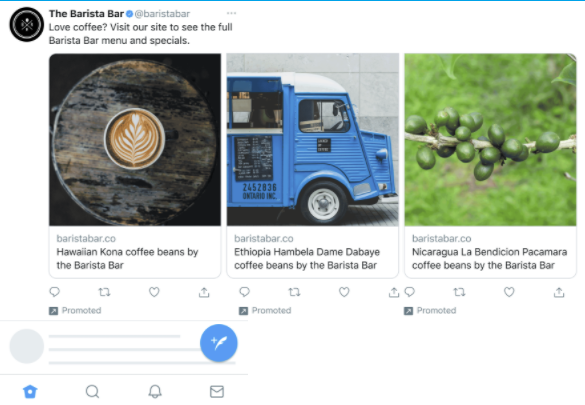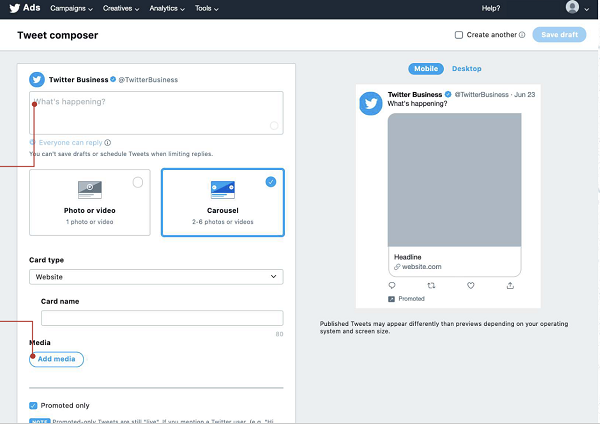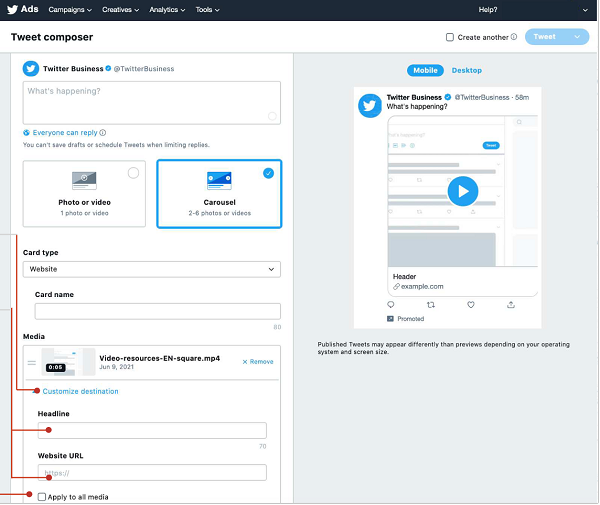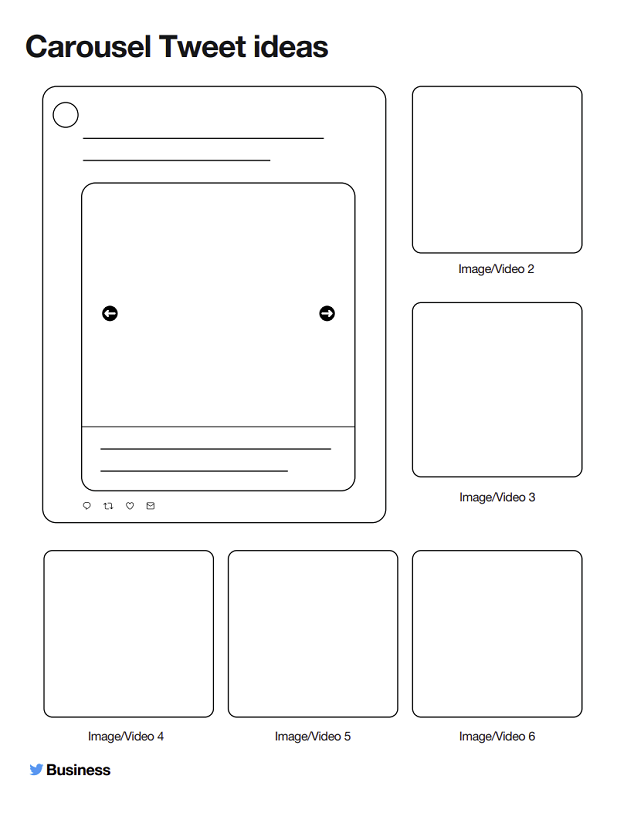Twitter’s carousel ads are an engaging, enticing format, which grab attention in-stream via variable images and text.

Carousel ads have always been one of the better performing Twitter ad options, and last October, Twitter enhanced its Carousel Ad offering by enabling custom headlines and landing pages to be utilized within each frame of your Carousel Ads, providing more ways to build responsive posts for variable audiences within one campaign.
Twitter says that, in testing, this capacity has made carousels an even more engaging option, boosting click-through rates by 20%, while campaigns optimized for site visit conversions saw a 25% increase, compared to single-asset ads.
If you’re looking for ways to maximize your Twitter marketing efforts, Carousel Ads are worth considering within your mix. And this week, Twitter has shared some new tips to help marketers maximize their carousel ads and organic posts, including a new worksheet for mapping out your carousel campaigns.
First off, Twitter highlights some of the key usage options for Carousel Ads, noting that Carousels can be great for:
- Showcasing multiple features or products
- Promoting multiple offers
- Illustrating various benefits of an app, product, or service
- Highlighting multiple reviews and customer quotes or testimonials
- Breaking up a single image across multiple frames
- Telling a multi-faceted story
Again, the multi-image format is great for stopping users mid-stream, with the second image showing just off screen, enticing swipe-through reaction. The more visually appealing and engaging you can make your carousels, the more likely that users will flip through your display – which is where multi-destination functionality can also add variety and interest.
To add alternative URLs to your Carousel images, you first need to go through the regular set-up process in Twitter Ads Manager, selecting ‘Carousel’ as your display option.

You can then add select up to six visual assets to add to your campaign, and you’re able to add both image and video assets within a single Carousel Ad.
Within the set-up process, you can then also add custom URLs to each of your media uploads:
“If you’re applying the same headline and URL, check “Apply to all media” under the first asset. You can also choose ‘Customize a destination’ for each of your media assets, adding a unique headline and URL for each.”

That enables you to drive traffic to different elements of your website based on each frame, adding another level of variability and info to your carousel display.
Which could be a great way to drive traffic – and if you’re planning out a Carousel Ads strategy, Twitter has also shared this new worksheet to use in your brainstorming.

Twitter has also provided some final tips for mapping out an effective Carousel Ads approach.
- Make sure that your images and videos tell a cohesive story and follow a visual narrative across each frame
- Clearly feature your product, service, or app and its benefits in your creative
- Don’t ignore your accompanying headlines, Tweet copy, and calls-to-action. Use these fields to provide extra context and encouragement to readers
- Customize headlines and URLs if using the multi-destination functionality. This will drive your audience to unique landing pages
- If leveraging mixed media in your Carousel Ad, image and video aspect ratios should remain consistent (1:1 image with 1:1 video, 16:9 image and 1.91:1 video)
- Check in on your detailed card-level and swipe metrics reported in your Ads Manager to iterate and learn
These are some great tips, and given the response data, it is worth considering the potential of Carousel Ads within your Twitter strategy – while you can also publish organic tweet carousels via the same process, by publishing the carousel direct from the Twitter Ads composer.
Twitter has also provided case study examples and additional tips for your Carousel process here, while you can also read more about Carousel Ads on this page.



